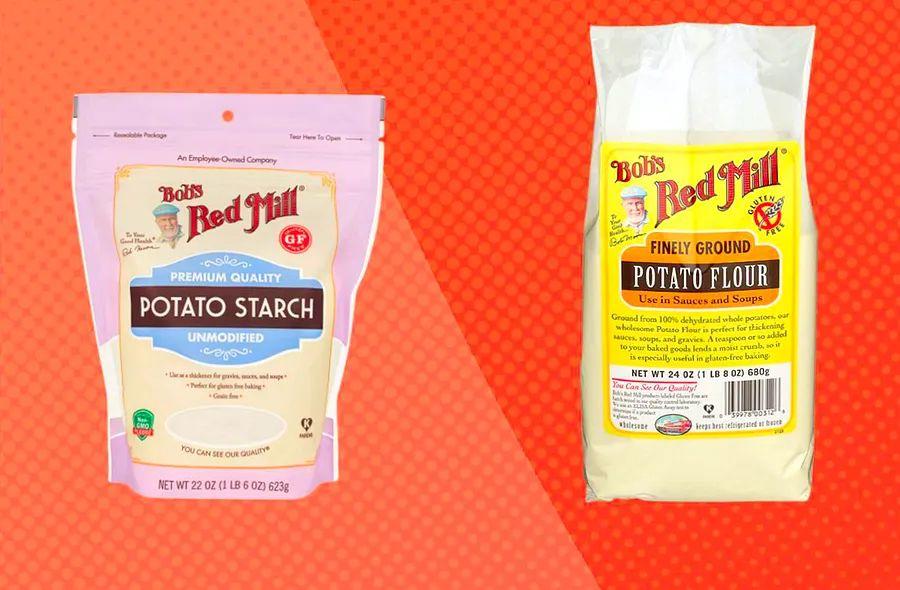Potato Starch vs Potato Flour: Understanding the Differences

Whether you're following a gluten-free diet or just curious about baking, potato starch and potato flour have distinct properties. One is the key to achieving crispy, golden fries, while the other is essential for creating soft, chewy breads. Here's everything you need to know before grabbing your next bag from the store.
Potato Starch
How is Potato Starch Made?
Potato starch is produced by first washing and peeling raw potatoes. Then, high-speed machinery extracts the starch, which is dried into a fine white powder that resembles cornstarch. Additionally, potato starch can sometimes be obtained as a by-product from processing potatoes for products like French fries or chips.
What Are the Uses of Potato Starch?
Similar to cornstarch, potato starch works well as a thickening agent for sauces, soups, stews, and fruit pie fillings. It makes an excellent alternative to cornstarch for these purposes.
Substitute potato starch for cornstarch when deep frying, as it withstands high temperatures and results in a crispier texture. You can also use it to prevent dinner rolls from going stale too quickly or sprinkle it on your countertop when rolling dough or fondant.
Potato starch is available for purchase both in stores and online, with well-known brands like Bob's Red Mill and JFC offering it.

Potato Flour
How is Potato Flour Made?
Potato flour begins with whole potatoes, just like potato starch, but the process differs significantly. The potatoes are first cooked, dried, and then ground into a fine powder. The result is a beige-colored powder, resembling whole-wheat flour.
Potato flour offers greater nutritional benefits compared to potato starch. It's packed with vitamins, minerals, protein, and fiber, making it a healthy, gluten-free substitute for wheat flour. However, it has a more pronounced potato flavor than potato starch.
What Is Potato Flour Used For?
Potato flour can be mixed with other gluten-free flours, such as rice flour, for baking. However, it's best not to use it as the only flour in recipes, as it retains a lot of moisture and can result in overly dense, gummy baked goods.
The moisture-absorbing quality of potato flour is actually a benefit: A small amount added to yeast bread can help keep it fresher for longer.
Like many other flours, potato flour serves as an effective thickener and binder. It works wonderfully in breading for meat, providing a crispier coating than wheat flour. Additionally, it can intensify the potato flavor in dishes like potato rolls.
You can find potato flour at your local supermarket or from popular online retailers, such as Bob's Red Mill.
Can Potato Starch and Potato Flour Be Used Interchangeably?
Not exactly. The only exception is when you're using potato flour to extend the shelf life of yeast breads, in which case you can swap in potato starch. However, the ratio isn't one-to-one. Since potato flour contains some starch but isn't entirely starch, you'll need slightly less potato starch—about ¾ the amount of potato flour. For other uses, there are better substitutes for both potato starch and flour, which we'll discuss below.
Common Substitutes
Substitutes for Potato Starch
Starches are generally easier to replace than flours. Here are some popular substitutes and their recommended ratios:
- Cornstarch: Use one tablespoon of cornstarch for every one tablespoon of potato starch.
- Tapioca Starch: Use two tablespoons of tapioca starch for every one tablespoon of potato starch.
- Arrowroot Powder: Use one tablespoon of arrowroot powder for every one tablespoon of potato starch.
Substitutes for Potato Flour
The top substitute for potato flour is potato flakes, which are essentially potato flour that hasn't been ground as finely. You can either mix the flakes into batter for baking or grind them into a finer powder using a food processor or blender. Potato flakes can be used in a 1:1 ratio for potato flour.
For thickening purposes, you can replace one tablespoon of potato flour with two tablespoons of tapioca flour.
For gluten-free baking, consider using this all-purpose gluten-free flour blend as an alternative.
Evaluation :
5/5



